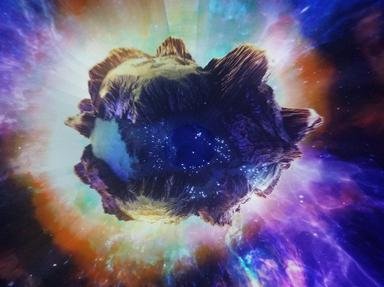Quiz Answer Key and Fun Facts
1. The cosmic microwave background is a remarkable phenomenon: light, all at almost exactly the same energy, fills the universe, coming from every direction. As strange as it may seem, it was predicted before it was found, in a landmark 1948 paper. What then-controversial theory was used to predict the presence of this radiation?
2. In 1964, well after theorists had first proposed its existence, the cosmic microwave background was discovered by two astronomers in Holmdel, New Jersey. Their names were Arno Penzias and Robert Wilson, and only fourteen years later they would be Nobel laureates. How did they discover the universe's background radiation?
3. The cosmic background is often described as having a temperature of 2.725 Kelvin - that's 2.725 degrees Celsius above absolute zero. What does it mean to say that these photons have a temperature?
4. The cosmic microwave background is sometimes referred to as "relic radiation" -- light left over from a truly ancient time. But it isn't a relic of the universe's first moments, of the hot plasma posited by theorists; instead, it's thought to come from about 380,000 years after the very beginning, just after an epoch called "recombination." What happened during this time period?
5. Very nearly uniform in every direction, the cosmic microwave background shows an early universe in thermal equilibrium -- but perhaps it's a little too uniform. In fact, its sameness was initially rather awkward for astrophysicists to explain, because it gives rise to something called the Horizon Problem. What is the crux of the problem?
6. Tiny changes in the temperature of the cosmic microwave background reflect variations in the density of the early universe. What mechanism is believed to have made some regions more dense and others more rarefied?
7. Temperature maps of the cosmic microwave background reveal a striking feature. Over the entire field of view, one side of the sky appears a bit colder and the other side appears a bit warmer; the difference is about seven thousandths of a degree Celsius. This is by far the largest temperature variation in the CMB. What causes it?
8. Since the cosmic microwave background is made up of light waves, we can use well-known techniques of wave analysis to analyze it. One useful tool involves looking at the angular sizes of variations in the CMB. It turns out that the largest fluctuations in the background radiation are on the scale of about one degree. What does this tell us about the universe?
9. It's a challenge to find the best placement for a satellite observatory; you need stable positioning, a clear field of view, and a nice line of sight back to Earth. For deep-sky observations like probes into the cosmic microwave background, it's also critical to block out contamination from the Sun. Luckily, the law of gravity says that there's one quasi-stable point in the Earth-Sun system where the Earth is always blocking the Sun. What is the name of this point?
10. Given how hard astrophysicists have struggled to make precise measurements of the cosmic microwave background, you might be forgiven for thinking that it's an extremely arcane phenomenon, well out of reach for mere mortals. However, you can see it for yourself in an old piece of equipment. In which of these ways does the CMB show itself?
Source: Author
CellarDoor
This quiz was reviewed by FunTrivia editor
crisw before going online.
Any errors found in FunTrivia content are routinely corrected through our feedback system.

